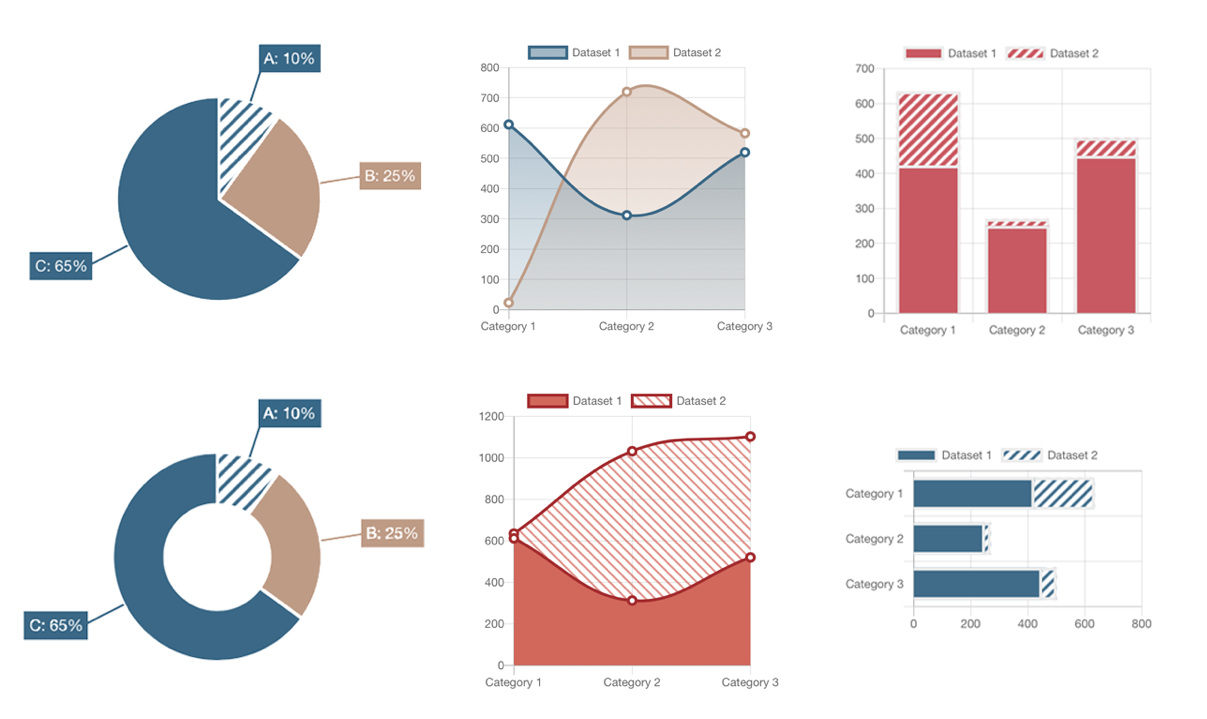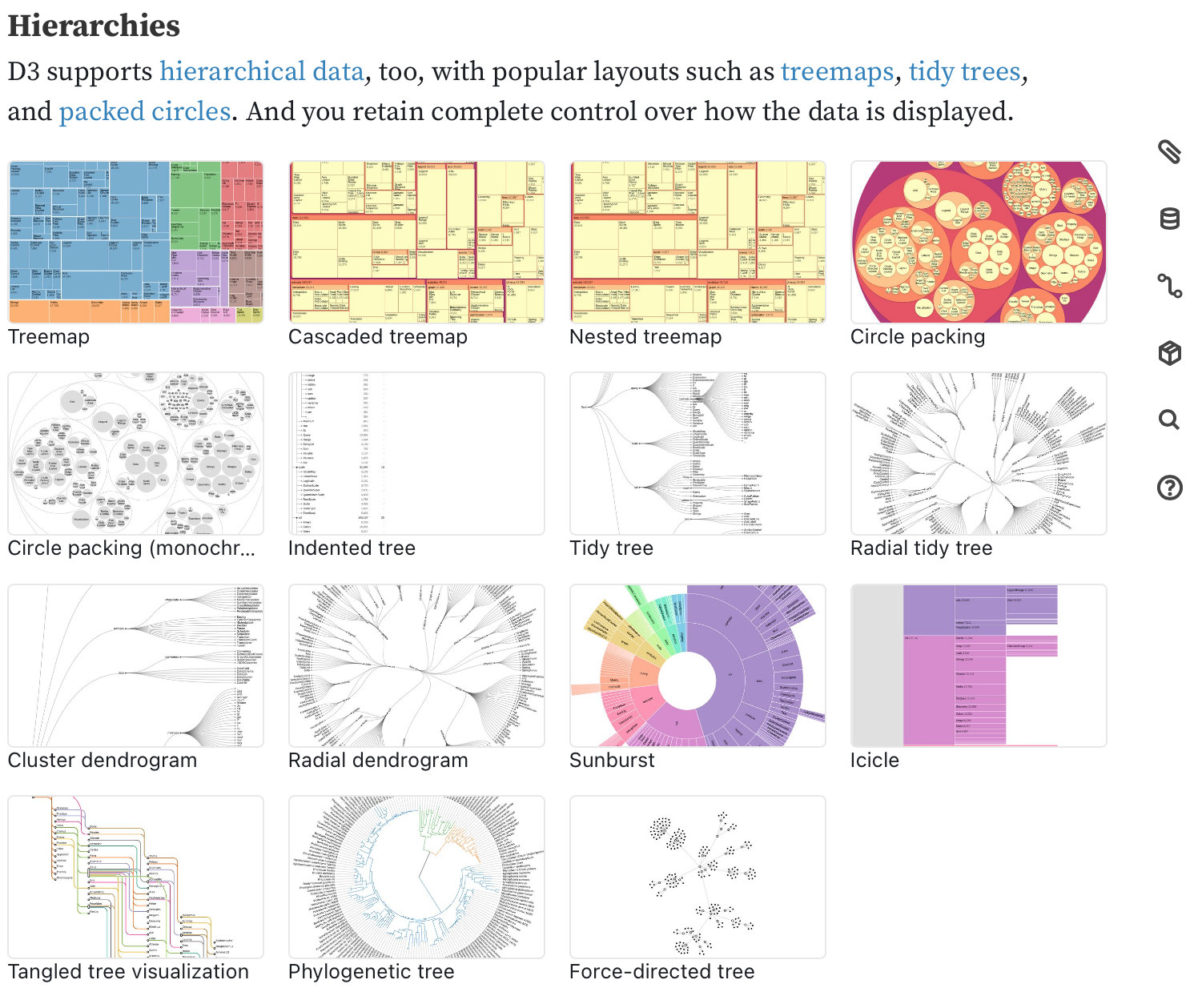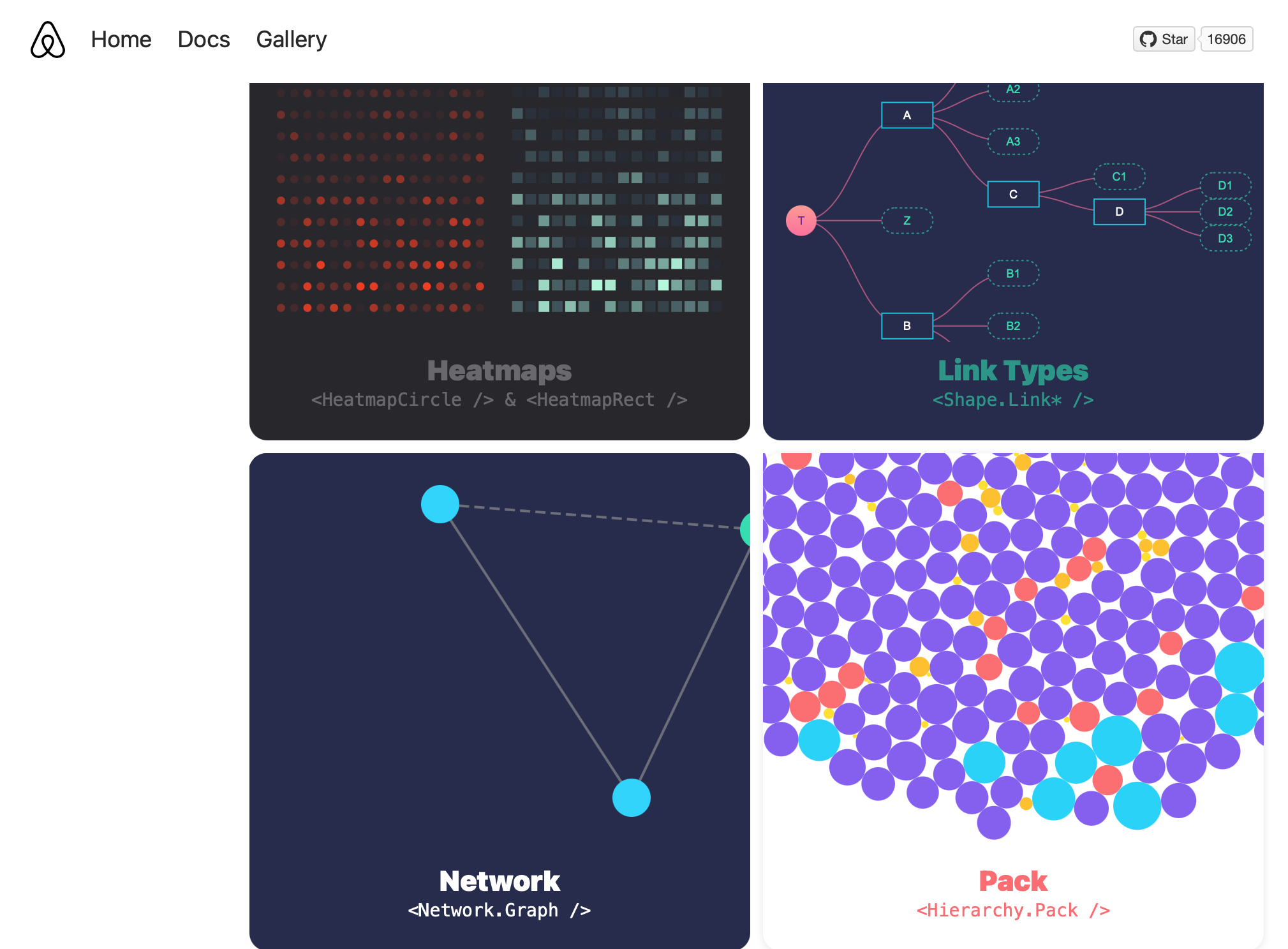Searching for a Data Visualization library (feat. BERTopic and Next.js)
BERTopic and Data Visualization
From the work, I use BERTopic to extract topic summary from a list of news texts. This is a good tool to start with, but along with any other AI techniques, BERTopic is far from perfect without any tweaks.
For the past weeks, I have been exploring various options in BERTopic (hierarchies, representations) to get a better summary of topics.
Among them, Hierarchy Visualization is the area I've been focusing on. In BERTopic, there is a function visuzalize_hierarchy() which makes a hierarchical dendrogram of topics using Plot.ly.
However, it doesn't give a satisfactory visualization in terms of flexibility (e.g., no collapsible tree, circle pack).
High-level (easy-to-use) libraries
Chart.js (opens in a new tab) - Easy to use and visually compelling
 Source: Chrispoth Pahmeyer on Observable (opens in a new tab)
Source: Chrispoth Pahmeyer on Observable (opens in a new tab)
I've always wanted to learn this popular Javascript charting library barring D3.js since I got to know the existence of this library.
The styling of charts made with Chart.js is so compelling to lead me to test out despite its lack of chart varieties. Besides, it is well applicable to React.js with react-chartjs-2 (opens in a new tab).
Unfortunately, this very fact forced me to look for other options.
Nivo (opens in a new tab) - Easy to use with a large library of chart options

Another great option is Nivo. It's almost perfect except its styling was little bit at odds with me.
For a library with its abstration, Nivo provides a bunch of charting options, even Tree or Circle Pack, which are not available with most libraries.
Another caveat is the lack of inherent support of a combined chart (e.g., line chart on top of bar chart). However, it now supports layers which enable users to combined different types of charts.
Low-level (more flexible) libraries
D3.js (opens in a new tab) - Most comprehensive
 Source: D3 Gallery on Observable (opens in a new tab)
Source: D3 Gallery on Observable (opens in a new tab)
In terms of flexibility, no other chart libraries can beat D3.js. It is notoriously difficult to master (like React.js?) even to get started (unlike React.js).
However, once you get to know the basics, limitless potential is upon you. On Observable (opens in a new tab), there are numerous visualization notebooks utilizing D3.js (obviously given that D3.js hosting its tutorials and examples on this platform).
While it is not the only tool, many of complicated- or cool-looking visualizations have been made with D3.js. For Data Visualizations in journalisms were made possible with this.
As D3.js's expressive grammar doesn't go well with the component-centric principle ofReact.js, many D3.js chart made even in React.js do not look like React.js code.
Many of codes are presented in Observable notebooks only complicate the matter (think of Jupyter notebook and MLops).
Potion.js (opens in a new tab) - Discontinued(?) low-level abstraction
It is one of options which provides low-level interface on top of D3.js, rather than high-level wrappers such as Chart.js. Nevertheless, it claims to work well with React.js.
While it might not simplify the visualization process dramatically, its great integration with React.js would make the job easier than raw D3.js.
The only caveat was the end of maintenance. From its GitHub repository (opens in a new tab), the last update was in 2018. Given the continous update of D3.js.
With its major version update, the syntax of D3.js is often overhauled that makes codes written in previous versions do not anymore.
Visx (opens in a new tab) - My choice

Similar to Potion.js, this low-level interface on top of D3.js perfectly compatible with React.js.
This library was made by Airbnb and is maintained actively. As I trust Airflow (another module made by Airbnb), I have nothing but confidence on this library.
Its low-level interface does not make my life drastically easier, it has flexibility however.
I found these two latter libraries on the day of this writing, and am fully intend to test out Visx pretty soon. While I prefer the overall styling of Potion.js, I am afraid that its syntax might be out of sync with latest version of D3.js.